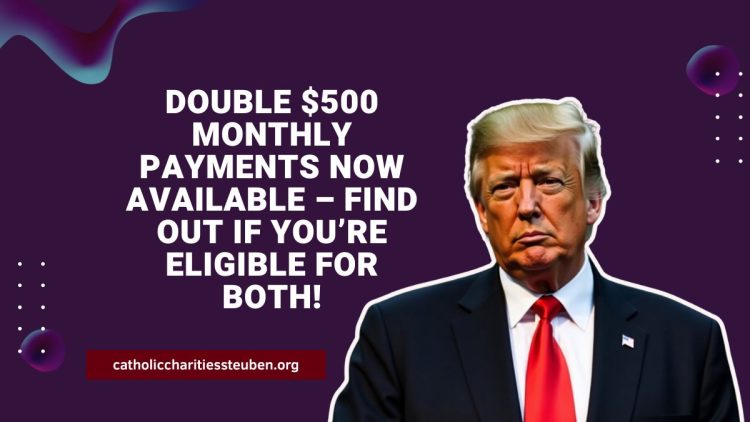In 2025, selected Americans have the opportunity to receive two separate $500 monthly payments through different financial aid programs.
These payments aim to support low- and moderate-income individuals and families struggling with rising living costs.
Here’s a complete breakdown of how these programs work, who qualifies, and how you can benefit.
Overview of the Two $500 Monthly Payment Programs
Eligible residents can now access $1,000 per month through a combination of federal and local support initiatives. These programs are designed to provide consistent financial relief, helping recipients cover essential expenses like food, rent, utilities, and healthcare.
Program 1: Federal $500 Monthly Support
The federal government is rolling out a $500 monthly payment program as an ongoing measure to aid citizens facing economic pressure.
Key Details:
- Amount: $500 per month
- Payment Mode: Direct deposit or mailed checks
- Start Date: Expected mid-2025
Eligibility Criteria:
- Must be a U.S. citizen or legal resident
- Possess a valid Social Security Number
- Annual income limits apply (typically under $75,000 for individuals and $150,000 for joint filers)
- Must not be claimed as a dependent by another taxpayer
These payments are designed to be automatic for those who qualify, requiring minimal additional paperwork.
Program 2: State-Level Guaranteed Income Initiatives
Several states and cities are independently offering $500 monthly payments under their own Guaranteed Basic Income (GBI) programs.
Examples of Active State Programs:
- Cook County Promise (Illinois):
- $500 per month for 24 months
- Available to 3,250 low-income households
- Evanston GBI Program (Illinois):
- $500 per month for 12 months
- Targeting low-income families and individuals
- UpLift Iowa Pilot:
- $500 per month for 24 months
- Aimed at low-income households in Central Iowa
Eligibility for State Programs:
- Residency in the participating city or county
- Income within specified lower thresholds
- Additional selection criteria may apply, such as household size or employment status
Unlike the federal payment, most state GBI programs require a formal application process and are often limited to selected applicants.
Federal vs State $500 Programs
| Feature | Federal $500 Program | State GBI Programs |
|---|---|---|
| Monthly Payment Amount | $500 | $500 |
| Who Can Qualify? | Nationwide (income limits) | Residents of select states/cities |
| How to Access | Automatic for eligible individuals | Requires application and selection |
| Payment Start Timeline | Mid-2025 | Ongoing for selected programs |
| Duration | Indefinite (pending funding) | 12–24 months (fixed) |
Important Things to Know
If you meet the eligibility requirements for both programs, you can receive both $500 payments at the same time, effectively boosting your monthly income by $1,000.
However, it’s crucial to ensure you complete any necessary applications for state programs and keep your federal records updated for automatic qualification.
The double $500 monthly payment opportunity in 2025 offers significant relief to Americans navigating financial hardships.
With one program at the federal level and another through local guaranteed income initiatives, eligible individuals could receive up to $1,000 every month.
Checking your eligibility and applying where needed can ensure you don’t miss out on this valuable financial support.
FAQs
Can I apply for both the federal and state $500 payments?
Yes, if you meet the individual eligibility criteria for both, you can receive payments from both programs simultaneously.
Are the $500 payments considered taxable income?
Generally, these payments are not taxable, but it is recommended to confirm your tax obligations during your annual filing.
How will I know if I’ve been approved for the state-level $500 payment?
Approved applicants are usually notified via email, text message, or postal mail from the respective local program administrators.

